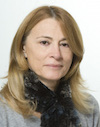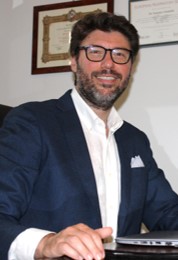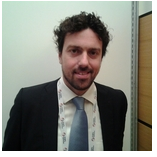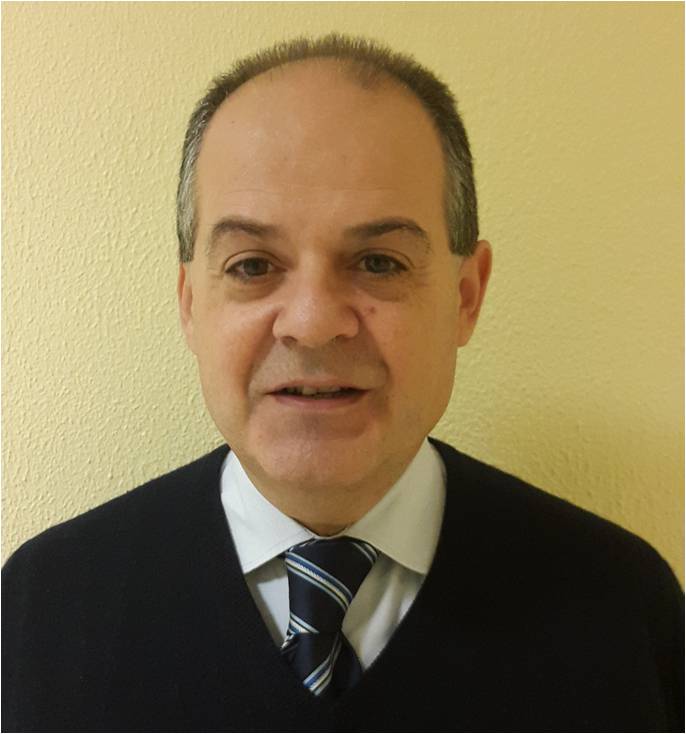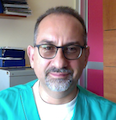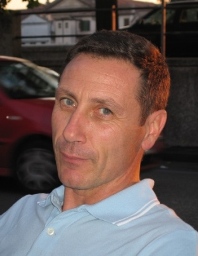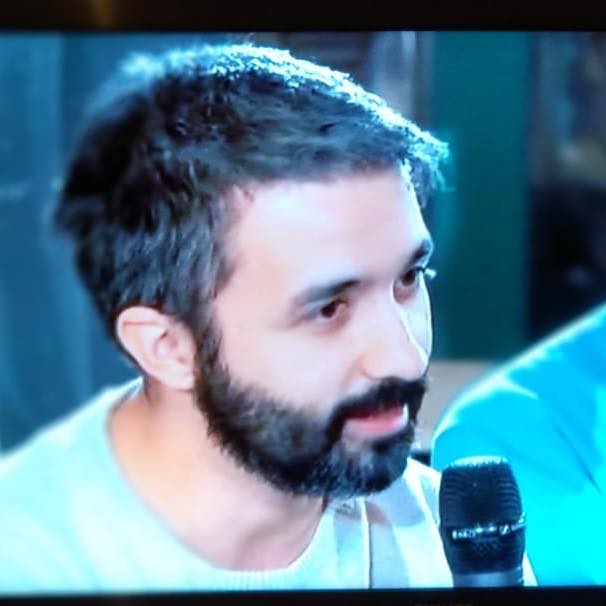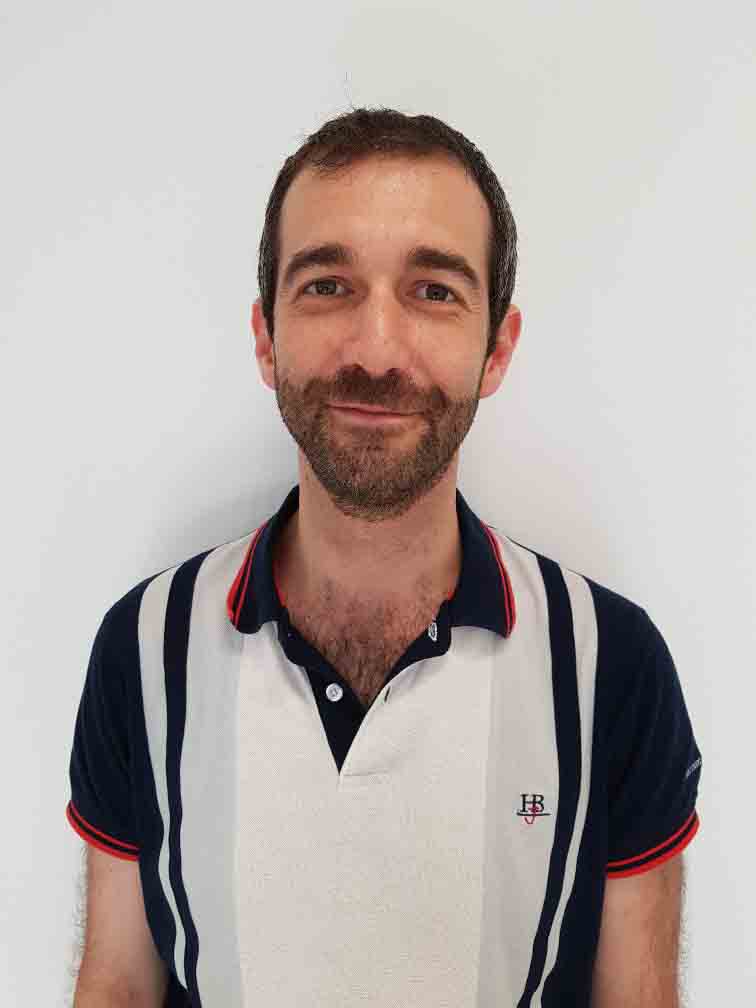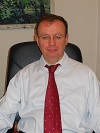Training and Research
PhD Programme Courses/classes - 2023/2024
Arthritis and bone diseases
Credits: 2
Language: Italiano
Teacher: Davide Gatti
How to do a meta-analysis using R
Credits: 1
Language: Italiano/English
Teacher: Alessandro Mantovani
Bone specialist
Credits: 2
Language: English
Teacher: Maurizio Rossini
Experimental Hematology and Stem Cells
Credits: 1
Language: Italiano
Teacher: Mauro Krampera
Ferroptosi e malattie cardiovascolari
Credits: 0,5
Language: Italian
Teacher: Anna Maria Fratta Pasini
Pathophysiology and clinical aspects of the itch
Credits: 0,5
Language: Italiano e/o Inglese
Teacher: Giampiero Girolomoni
NAFLD & systemic complications - Translational medicine
Credits: 0,8
Language: English
Teacher: Giovanni Targher
New therapeutic strategies for inflammatory bowel diseases
Credits: 0,5
Language: Italiano
Teacher: Rachele Ciccocioppo
Pathophysiology and clinical aspects of the itch (2023/2024)
Teacher
Referent
Credits
0.5
Language
Italiano e/o Inglese
Class attendance
Free Choice
Location
VERONA
Learning objectives
The aim of the course is to discuss the neuro-physiological mechanisms of itching, the main chemical mediators involved, the clinical relevance of the symptom, the main diseases in which the symptom is dominant and the therapeutic aspects of itching in the main pathologies.
Prerequisites and basic notions
The PhD student will have to demonstrate that they know how to juggle the various methodologies of the scientific method
Program
Pruritus is defined as an unpleasant sensation that provokes the desire to scratch. Pruritus is a common
symptom of numerous inflammatory skin diseases, and it can be severe enough to interfere with sleeping
and daily activities, and impact markedly on patients’ quality of life. Chronic pruritus (CP) is defined
clinically by its persistence for more than 6 weeks and it is a frequent complaint in the general population,
with a 13.5-16.8% point prevalence. CP can be classified on the basis of its underlying aetiology as
dermatological, systemic, neurological, somatoform or multifactorial [3] . The neurophysiology and basic
mechanisms underlying CP have been recently elucidated using animal models and with clinical studies,
contributing to new pathophysiological and therapeutic concepts. CP is a common symptom of a
heterogeneous spectrum of cutaneous inflammatory skin diseases, which have been recently re-classified
according to their immune response pattern, based on specific cellular and cytokine signatures.
The itch sensation usually originates around the dermo-epidermal junction by the activation of selective or
specific nerve endings called pruriceptors. Then, itch is processed and transmitted by specific pathways
through nerves and the spinal cord to the brain. At least two classes of primary afferent C fibers transmit
itch, mechano-insensitive C fibers and mechano-responsive polymodal C-nociceptor units, as well as thinly
myelinated Aδ fibers afferents. Specific receptors located on these fibers can be activated by a large
number of endogenous itch-inducing agents released by keratinocytes, immune cells or neighbouring
neuronal afferent and exogenous agents, such as proteases released by Staphylococcus aureus. These
sensory neurons have cell bodies in the dorsal root ganglion (DRG) and project primary afferents to the
skin, and they send projections to the dorsal horn of the spinal cord, where they synapse with second- or
third-order neurons, that come together to form part of the spinothalamic tract, which then ascends up to
the thalamus and proceed to the somatosensory and the anterior cingulate cortex. Second- and third-order
neurons in the spinal cord may have either excitatory or inhibitory functions. Pathways of itch are complex
and not fully established. Moreover, pruritus and pain pathways are largely overlapped and interrelated,
though the exact relationships are still a matter of debate. Several chemical pruritogens and some physical
stimuli have been experimentally used to elicit itch to investigate pruritus pathways and test potential anti-
pruritic drugs. However, no objective methods to elicit and to evaluate itch have been standardized.
Pruritus is a common symptom of several skin diseases, both inflammatory and neoplastic. Pruritus may
have a tremendous impact on the patients’ quality of life and strongly interfere with sleep, social and work
activities. We review the role of type-2 inflammation and immunity in the pathogenesis of chronic pruritic
conditions of the skin. Type 2 cytokines, including IL-4, IL-13, thymic stromal lymphopoietin, periostin, IL-
31, IL-25 and IL-33 are released by mast cells, innate lymphoid cells 2, keratinocytes and type 2 T
lymphocytes and are master regulators of chronic itch. These cytokines may act as direct pruritogen on
primary sensory neurons (pruriceptors) or alter the sensitivity to other itch mediators Type 2 inflammation-
and immunity-dominated skin diseases, including atopic dermatitis, prurigo nodularis, bullous pemphigoid,
scabies, parasitic diseases, urticaria, and Sézary syndrome are indeed conditions associated with most
severe pruritus. In contrast, in other skin diseases, such as scleroderma, lupus erythematosus, hidradenitis
suppurativa, and acne, type 2 inflammation is less represented, and pruritus is milder or variable. Th2
inflammation and immunity have evolved to protect against parasites, and thus, the scratching response
evoked by pruritus may have developed to alert about the presence and to remove parasites from the skin
surface.
When and where
Lectures
Individual meetings
Learning assessment procedures
Interview
Assessment
Assessment of the PhD student's skills in planning research activities
Criteria for the composition of the final grade
Eligibility
PhD school courses/classes - 2023/2024
Please note: Additional information will be added during the year. Currently missing information is labelled as “TBD” (i.e. To Be Determined).
PhD students must obtain a specified number of CFUs each year by attending teaching activities offered by the PhD School.
First and second year students must obtain 8 CFUs. Teaching activities ex DM 226/2021 provide 5 CFUs; free choice activities provide 3 CFUs.
Third year students must obtain 4 CFUs. Teaching activities ex DM 226/2021 provide 2 CFUs; free choice activities provide 2 CFUs.
Registering for the courses is not required unless explicitly indicated; please consult the course information to verify whether registration is required or not. When registration is actually required, no confirmation e-mail will be sent after signing up.
Teaching Activities ex DM 226/2021: Linguistic Activities
INFORMATION: ENGLISH FOR ACADEMIC PRESENTATION SKILLS [Arts and Humanities]
Credits: 2,5
Language: English
INFORMATION: ENGLISH FOR ACADEMIC PRESENTATION SKILLS [Law and Economics]
Credits: 2,5
Language: English
INFORMATION: ENGLISH FOR ACADEMIC PRESENTATION SKILLS [Life and Health Sciences - 1 st Session]
Credits: 2,5
Language: English
INFORMATION: ENGLISH FOR ACADEMIC PRESENTATION SKILLS [Life and Health Sciences - 2 nd Session]
Credits: 2,5
Language: English
INFORMATION: ENGLISH FOR ACADEMIC PRESENTATION SKILLS [Natural Sci. and Engineering-1st Session]
Credits: 2,5
Language: English
INFORMATION: ENGLISH FOR ACADEMIC PRESENTATION SKILLS [Natural Sci. and Engineering-2nd Session]
Credits: 2,5
Language: English
INFORMATION: ENGLISH FOR ACADEMIC WRITING SKILLS [Arts and Humanities]
Credits: 2,5
Language: English
INFORMATION: ENGLISH FOR ACADEMIC WRITING SKILLS [Law and Economics]
Credits: 2,5
Language: English
INFORMATION: ENGLISH FOR ACADEMIC WRITING SKILLS [Life and Health Sciences - 1 st Session]
Credits: 2,5
Language: English
INFORMATION: ENGLISH FOR ACADEMIC WRITING SKILLS [Life and Health Sciences - 2 nd Session]
Credits: 2,5
Language: English
INFORMATION: ENGLISH FOR ACADEMIC WRITING SKILLS [Natural Sci. and Engineering-1st Session]
Credits: 2,5
Language: English
INFORMATION: ENGLISH FOR ACADEMIC WRITING SKILLS [Natural Sci. and Engineering-2nd Session]
Credits: 2,5
Language: English
Teaching Activities ex DM 226/2021: Research management and Enhancement
SEMINARIO AVANZATO SULLE RISORSE BIBLIOTECARIE PER LA RICERCA [Arts and Humanities]
Credits: 2,5
Language: Italian
Teacher: Donatella Boni
SEMINARIO AVANZATO SULLE RISORSE BIBLIOTECARIE PER LA RICERCA [Law and Economics]
Credits: 2,5
Language: Italian
Teacher: Luisella Zocca
SEMINARIO AVANZATO SULLE RISORSE BIBLIOTECARIE PER LA RICERCA [Scientific Area]
Credits: 2,5
Language: Italian
Teacher: Elena Scanferla
Teaching Activities ex DM 226/2021: Statistics and Computer Sciences
INTRODUCTION TO PROBABILITY (MODULE I)
Credits: 1
Language: English
Teacher: Marco Minozzo
INTRODUCTION TO PROBABILITY (MODULE II)
Credits: 1
Language: English
Teacher: Marco Minozzo
BASIC LEVEL STATISTICS
Credits: 2,5
Language: English
INTRODUCTION TO STATISTICAL INFERENCE
Credits: 1
Language: English
Validità e affidabilità delle misure e dei test diagnostici
Credits: 0,5
Language: English
Teacher: Alessandro Marcon
BASIC LEVEL STATISTICS
Credits: 2,5
Language: Italian
Statistical analysis with R - module I
Credits: 1
Language: Italian
Teacher: Erica Secchettin
Generalized linear models: logistic regression, loglinear model, Poisson model
Credits: 2
Language: English
Teacher: Lucia Cazzoletti
Disegno dello studio nella ricerca osservazionale e sperimentale
Credits: 1,5
Language: English
Teacher: Alessandro Marcon
Calcolo della numerosità campionaria in funzione di una precisione o potenza statistica prefissata
Credits: 1
Language: English
Teacher: Giuseppe Verlato
Introduzione alla meta-analisi per la ricerca biomedica (revisione della letteratura, raccolta dei dati, costruzione del database)
Credits: 1
Language: English
Teacher: Giuseppe Verlato
Applicazioni della meta-analisi in campo epidemiologico e medico
Credits: 1
Language: English
Teacher: Giuseppe Verlato
Analisi di sopravvivenza: test log-rank, curve di sopravvivenza di Kaplan-Meier, modello di regressione di Cox
Credits: 1,5
Language: Inglese - English
Teacher: Simone Accordini
INTERMEDIATE STATISTICS [Recommended for Human Sciences]
Credits: 2,5
Language: English
INTERMEDIATE STATISTICS [Tutti i corsi di studio]
Credits: 2,5
Language: English
Statistical analysis with R - module II
Credits: 2
Language: Italian
Teacher: Erica Secchettin
Teaching Activities: Free choice
PROTECTING PSYCHOLOGICAL WELL-BEING IN THE PHD PROGRAM: WHAT DO WE NEED TO CONSIDER FOR BEING A GOOD SCIENTIST: BEST PRACTICE AND THE ETHICS OF SCIENCE
Credits: 1
Language: inglese
Teacher: Paola Cesari
QUANDO LA RICERCA SI FA ETICA (PERCORSO ORGANIZZATO E FINANZIATO DAL TEACHING AND LEARNING CENTER DI UNIVR)
Credits: 2
Language: Italian
Teacher: Roberta Silva
IMPARA IL MARKETING DIGITALE
Credits: 1,5
Language: English
Italian Poetry abroad
Credits: 1
Language: Italiano
Teacher: Massimo Natale
COSTRUISCI IL TUO BUSINESS MODEL CANVAS
Credits: 1,5
Language: English
APPROCCI E METODOLOGIE PARTECIPATIVE NELLA RICERCA CON GLI ATTORI DEL TERRITORIO
Credits: 1,5
Language: Italian
Teacher: Cristiana Zara
DOING INTERVIEWS IN QUALITATIVE RESEARCH
Credits: 1,5
Language: English
Teacher: Chiara Sità
LA COMUNICAZIONE UMANISTICA: OPPORTUNITA' E RISCHI
Credits: 1
Language: Italiano
DIFFERENTIAL DIAGNOSIS OF DEMYELINATING DISEASES OF THE CENTRAL NERVOUS SYSTEM
Credits: 2
Language: English
Teacher: Alberto Gajofatto
IL SONNO E I SUOI DISTURBI: FOCUS SULLE PARASONNIE E I DISTURBI DEL MOVIMENTO IN SONNO
Credits: 1
Language: English
Teacher: Elena Antelmi
IMAGING TECHNIQUES FOR BODY COMPOSITION ANALYSIS
Credits: 1
Language: English
Teacher: Carlo Zancanaro
OPEN SCIENCE: THE MIGHTY STICK AGAINST "BAD" SCIENCE
Credits: 2
Language: English
Teacher: Alberto Scandola
THE EMPIRICAL PHENOMENOLOGICAL METHOD (EPM): THEORETICAL FOUNDATION AND EMPIRICAL APPLICATION IN EDUCATIONAL AND HEALTHCARE FIELDS
Credits: 2
Language: English
THE PATHWAY OF OXYGEN: CAUSE OF HYPOXEMIA
Credits: 1
Language: English
Teacher: Carlo Capelli
Faculty
 yuri.battaglia@univr.it
yuri.battaglia@univr.it
 elena.carrara@univr.it
elena.carrara@univr.it
 davide.gatti@univr.it
davide.gatti@univr.it
PhD students
No people are present. 40° Ciclo not started.
Loading...
Guidelines for PhD students
Below you will find the files that contain the Guidelines for PhD students and rules for the acquisition of ECTS credits (in Italian: "CFU") for the Academic Year 2023/2024.

 +39 045 812 6485
+39 045 812 6485

